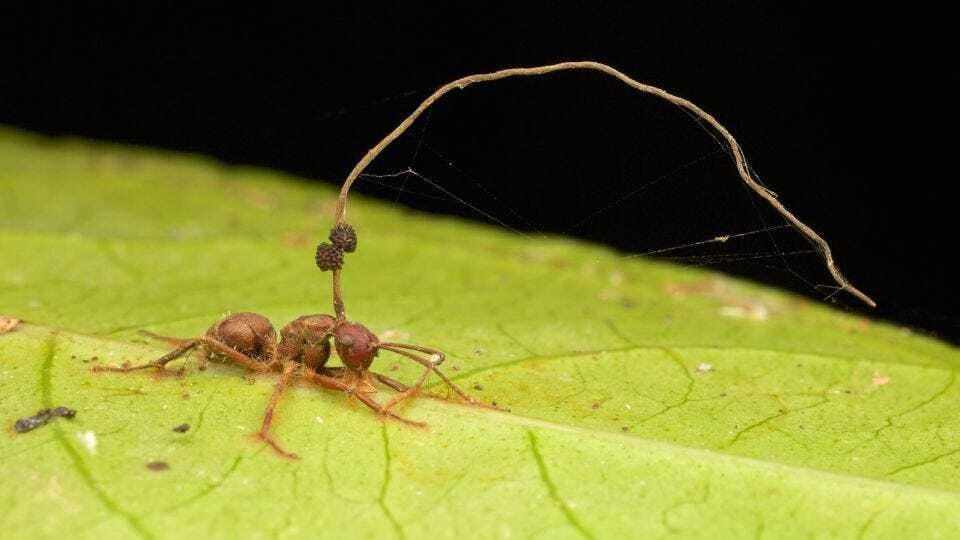I just read articles about fungi that inspired 'The Last of Us.' It was an interesting read. I will post sources at the bottom. What is the Last of Us all about?The Last of Us is a popular post-apocalyptic action-adventure video game developed by Naughty Dog. The game is set in a world where a fungal infection has turned most of humanity into zombie-like creatures known as "infected." The story follows Joel, a smuggler, and Ellie, a teenage girl, as they navigate this dangerous world and try to survive while forming a close bond. The game explores themes of survival, loss, and the human condition in a brutal and unforgiving world.

A TV adaptation of The Last of Us is currently out on HBO. HBO's series is being developed and set to star Pedro Pascal as Joel and Bella Ramsey as Ellie, with Craig Mazin (creator of the TV series Chernobyl) and Neil Druckmann (one of the game's original creators) serving as executive producers and writers. The series is expected to closely follow the first game's storyline while expanding on some of the game's lore and characters.I learned that there is a Deaf character in this TV series. Although I did not finish the rest yet and only saw two or maybe three episodes, I am sure he is doing great as a character in this show. I don't know if he is a recurring character in the TV series. I'll be sure to find out soon.A few weeks ago, they started talking about fungus mentioned in The Last of Us and made it into the news everywhere. At first, I thought it was just fiction, and I thought it might never have happened at any point in our lifetimes or the next and next one. But the fungus that infected humans that turned into zombies in the story is real! But, good news, it won't work on humans because that fungus cannot survive on our body temperature in real life.What is the fungus's name? It is Cordyceps.What is Cordyceps? Cordyceps is a genus of fungi that includes several species known for their medicinal properties and use in traditional medicine. Cordyceps species are parasitic and typically infect insects, but some species can also infect other arthropods or plants. The most famous species in this genus is Cordyceps sinensis, which is highly valued in traditional Chinese medicine for its purported health benefits and is also used as a dietary supplement. Cordyceps have been studied for their potential effects on immune function, energy production, and exercise performance, among other things.

However, another fungus called Ophicordyceps can cause zombie behavior only in insects, mostly ants. Ophiocordyceps is a genus of fungi that includes species known to parasitize insects and other arthropods. One of the most well-known species in this genus is Ophiocordyceps unilateralis, which is known for manipulating infected ants' behavior and directing them to a location where the fungus can more easily spread its spores.Some species of Ophiocordyceps fungi are known to infect and manipulate the behavior of ants in a way that has been likened to a "zombie" effect. When an ant becomes infected with these fungi, the fungus grows inside its body. Eventually, it takes control of its behavior, causing the ant to climb higher before dying. The fungus then grows out of the ant's body to release its spores, which can infect other ants and continue the cycle. This phenomenon has been studied for its potential applications in controlling insect pests in agriculture and forestry.

However, this fictional fungus, Cordyceps brain infection (CBI), seen in the video game and the TV adaption "The Last of Us," causes an infection that turns humans into zombie-like creatures. While CBI is loosely based on the real-world Cordyceps fungi, the game's version of the fungus is highly exaggerated and fictionalized for the story's purpose. In the game and TV show, the fungus is depicted as highly infectious and capable of rapidly transforming its hosts into aggressive, zombie-like creatures. It's important to note that while some real-world fungi can cause illness or infections in humans, no known fungus can cause the rapid and extreme transformation seen in the game or TV. But someone points out in that article that climate change could spur fungal adaptations to hotter habitats.So can you imagine the Ophicirdyceps can survive on body temperature? Would it cause the mind to control our minds and become zombies?We will never know until climate change takes a toll on our warming planet.You will see an image of an ant becoming a zombie after being infected with Ophiocordyceps. Yikes. Sources: 1. https://www.cnn.com/2023/02/07/health/fungus-health-threat-scn/index.html2. https://www.cnn.com/2023/01/25/world/zombie-fungus-ophiocordyceps-the-last-of-us-scn/index.html
Disclaimer:Some of the summaries I use were created by Artificial Intelligence called ChatGPT to help me write better, though I modified some of them and wrote some in my own words. You can check out more information here: https://openai.com/blog/chatgpt/. It launched publicly in November, created by OpenAI, and it has already hit the 1 million mark five days after the launch. What is ChatGPT?ChatGPT is an AI language model developed by OpenAI. It's a conversational AI model trained on a large corpus of text data from the internet, allowing it to generate human-like responses to various questions and prompts. The model uses a deep learning approach known as Transformer, which has been shown to be effective in language tasks such as translation and text generation.ChatGPT can be used for various purposes, including customer service, virtual assistants, and information retrieval. It can answer questions, provide explanations, generate creative writing, and more. The model aims to provide users with helpful and informative responses in a conversational manner.Overall, ChatGPT is a cutting-edge AI technology that has the potential to revolutionize the way we interact with computers and access information.